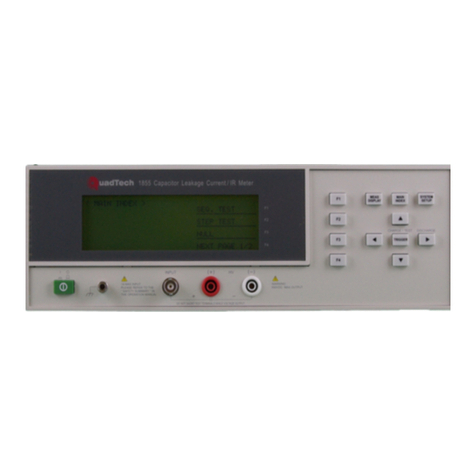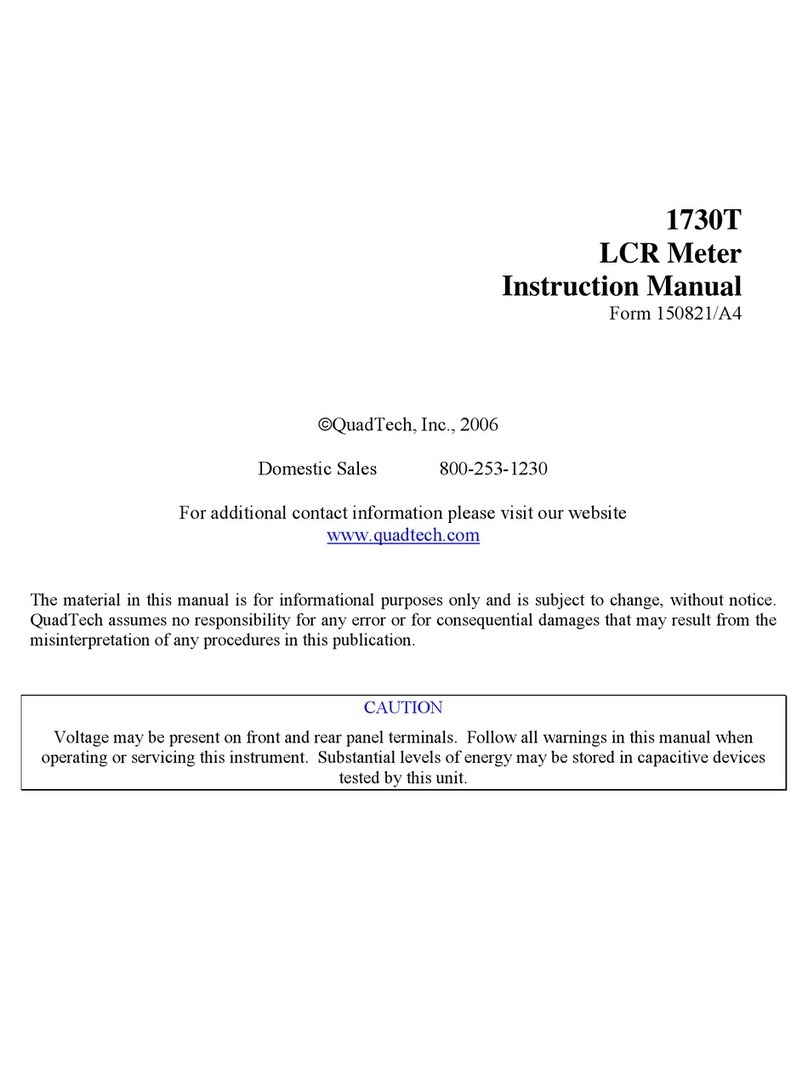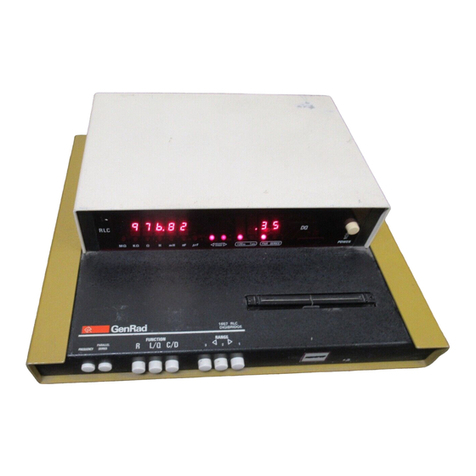
iv
Contents (continued)
2.6.3 I/O Menu............................................................................................2-22
2.6.3.1 Display Type ........................................................................2-23
2.6.3.2 Nominal Value......................................................................2-26
2.6.3.3 Result Format ....................................................................... 2-26
2.6.3.4 Trigger..................................................................................2-27
2.6.3.5 Handler Interface..................................................................2-27
2.6.3.6 RS-232 Interface...................................................................2-27
2.6.3.7 IEEE-488.2 Interface............................................................2-28
2.6.3.8 Print Results..........................................................................2-28
2.6.3.9 Results to Floppy..................................................................2-29
2.6.4 Analysis Menu...................................................................................2-35
2.6.4.1 Binning .................................................................................2-36
2.6.4.2 Test Sequencing....................................................................2-41
2.6.4.3 Parameter Sweep .................................................................. 2-44
2.6.4.4 Median..................................................................................2-46
2.6.4.5 Distortion Detection ............................................................. 2-46
2.6.4.6 Load Correction....................................................................2-46
2.6.5 Utilities Menu....................................................................................2-48
2.6.5.1 Save Setup ............................................................................ 2-49
2.6.5.2 Recall Setup.......................................................................... 2-50
2.6.5.3 Setup Accuracy.....................................................................2-51
2.6.5.4 Open / Short..........................................................................2-54
2.6.5.5 Lock Out...............................................................................2-55
2.6.5.6 Calibration............................................................................2-56
2.6.5.7 Set Time/Date.......................................................................2-56
2.6.5.8 Usage/Cal Date.....................................................................2-57
2.6.5.9 Set Contrast ..........................................................................2-57
2.6.5.10 Self Test..............................................................................2-58
2.6.5.11 LCD Backlite......................................................................2-58
2.7 Input/Output Interface ...................................................................................2-59
2.7.1 I/O Interface.......................................................................................2-59
2.7.2 Parallel Interface................................................................................2-63
2.7.3 IEEE-488.2 Interface.........................................................................2-64
2.7.3.1 Formats.................................................................................2-74
2.7.3.2 Sample Program for National Instruments GPIB card.........2-76
2.7.4 RS232 Interface.................................................................................2-77
2.7.5 Results to Printer ...............................................................................2-78






























